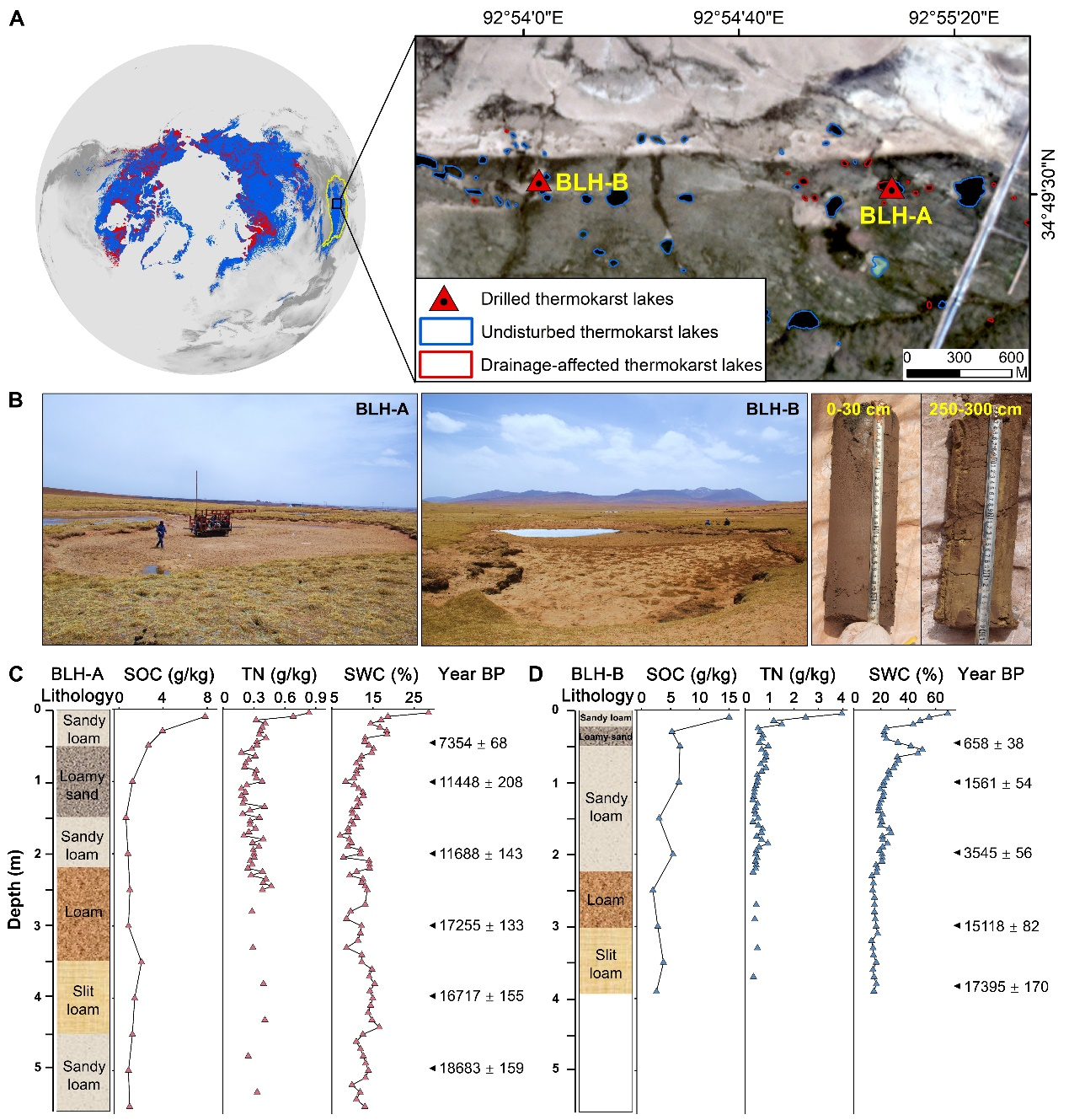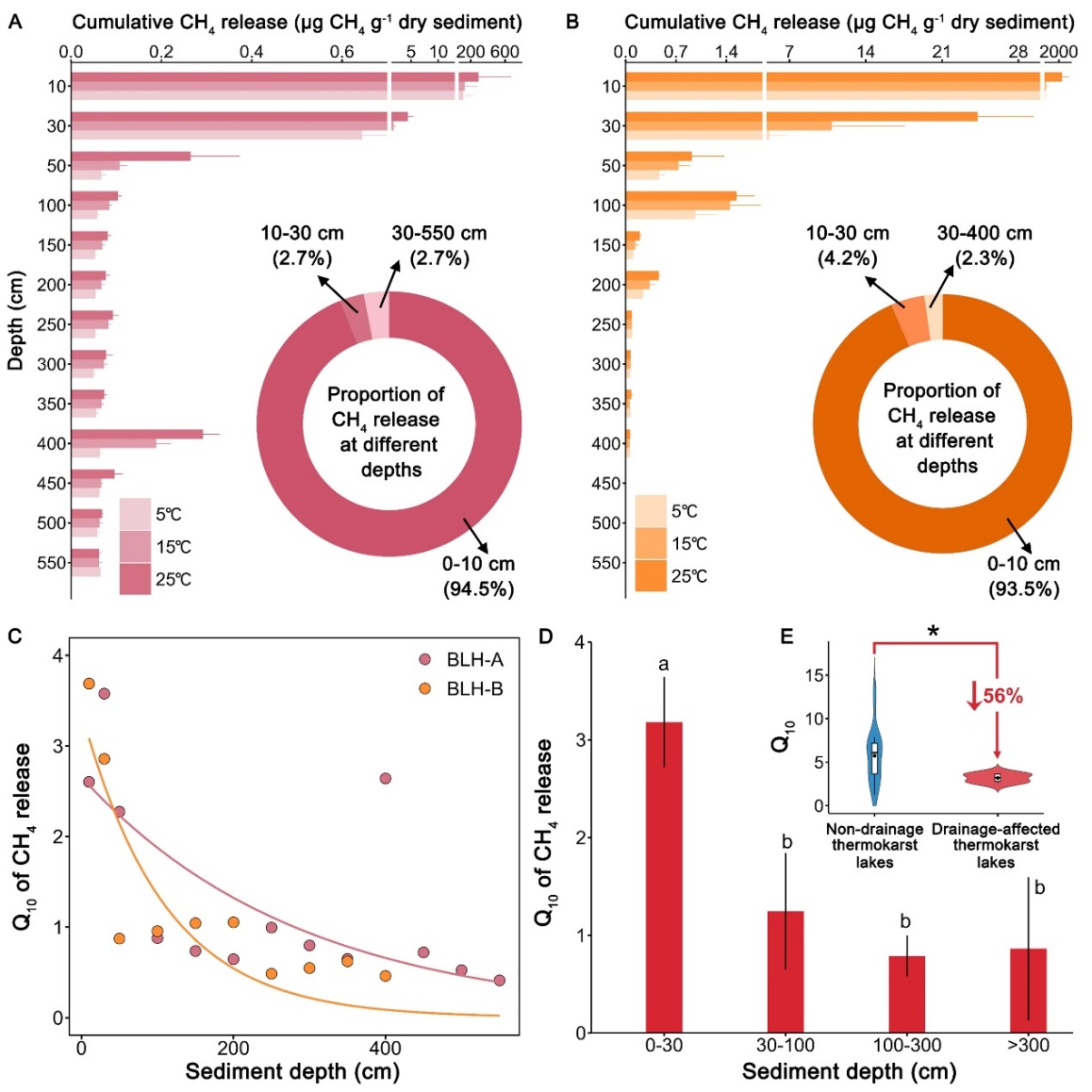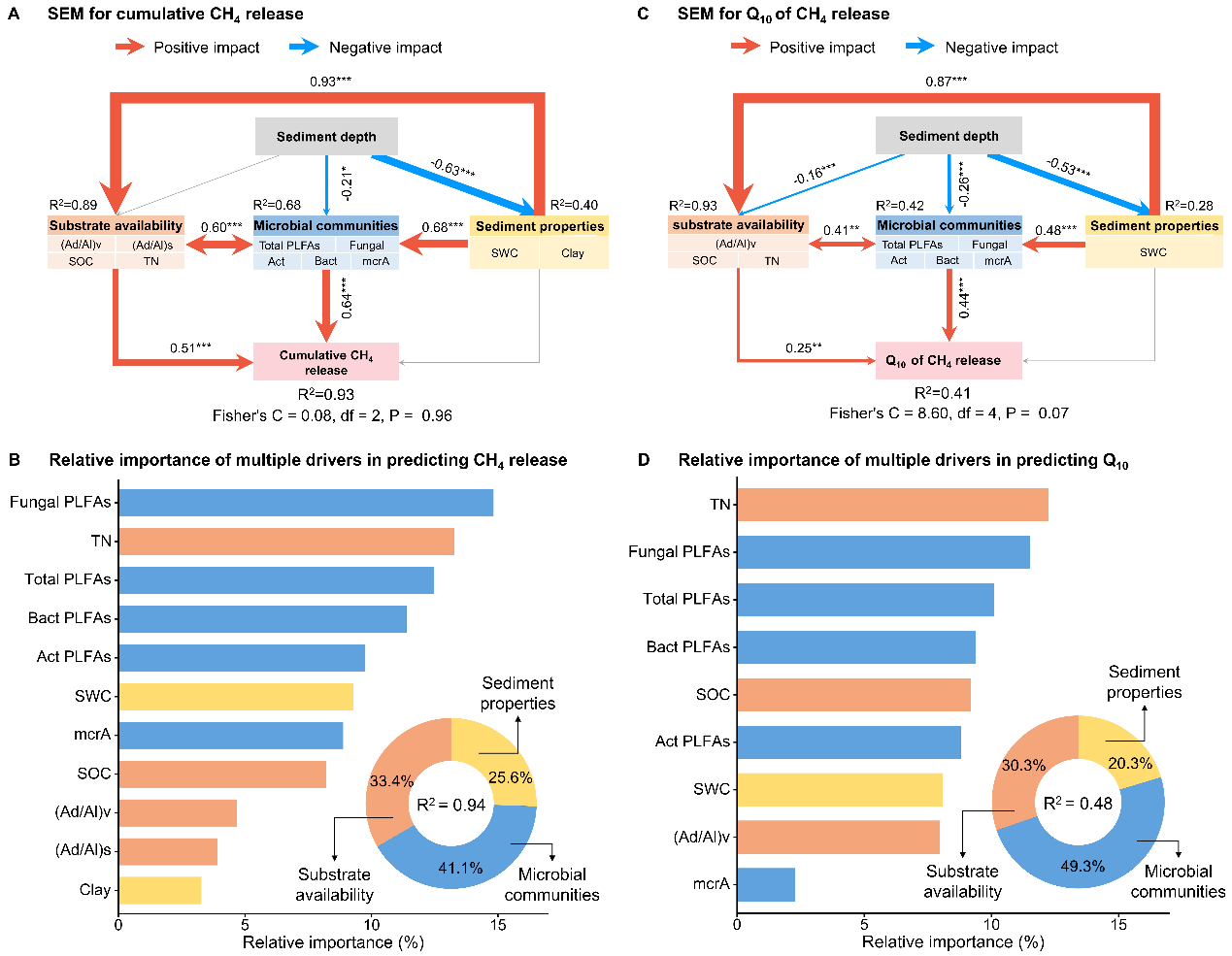Under the background of climate warming, permafrost degradation and changes in precipitation not only lead to the formation and expansion of thermokarst lakes, accelerating CH? emissions, but can also trigger drainage events in these lakes. However, the impact of thermokarst lake drainage on the temperature sensitivity of sediment CH? emissions and its regulatory factors remains highly uncertain. A research team led by Professor Mu Cuicui from the School of Earth and Environmental Sciences at Lanzhou University, using permafrost drilling, laboratory incubation, and comparative analysis, found that CH? release temperature sensitivity in drained thermokarst lakes decreased by approximately 56%. The study identified microbial communities and substrate availability as the primary controlling factors of CH? emissions and temperature sensitivity changes in drained lakes. This research reveals that drainage events in thermokarst lakes on the Qinghai-Tibet Plateau mitigate the response of CH? emissions to rising temperatures.
The study, titled"Thermokarst lake drainage halves the temperature sensitivity of CH? release on the Qinghai-Tibet Plateau,"was published online inNature Communicationson February 26, 2025. Ph.D. student Mu Mei from the School of Earth and Environmental Sciences at Lanzhou University is the first author, and Professor Mu Cuicui is the corresponding author. This research was supported by the National Natural Science Foundation of China (Grant No. 43271132).
Permafrost, as a crucial component of the global terrestrial ecosystem, covers approximately 22% of the land area in the Northern Hemisphere. Under global warming, permafrost degradation leads to the decomposition of previously frozen organic carbon, releasing substantial greenhouse gases into the atmosphere. This process accelerates global warming, creating a positive feedback to climate change. Currently, permafrost degradation is intensifying, accelerating the formation, expansion, and drainage (seasonal, intermittent, or permanent drying) of thermokarst lakes. Compared to lakes with permanent water cover, thermokarst lake drainage significantly alters hydrological dynamics, thereby affecting redox conditions, carbon availability, vegetation types, and microbial communities, ultimately influencing CH? emission processes. However, current knowledge on the extent of CH? emission changes due to thermokarst lake drainage is limited, and the temperature sensitivity and driving mechanisms of CH? emissions in drained lakes remain unclear. This knowledge gap greatly hinders accurate assessments of permafrost carbon-climate feedbacks.
To address these key scientific questions, this study collected deep sediment cores from drained thermokarst lakes on the Qinghai-Tibet Plateau and analyzed sediment carbon and nitrogen content, composition, dating, microbial community structure, and abundance. The results showed that substrate availability and microbial abundance in drained lake sediments rapidly decreased with depth, with significantly higher values in surface sediments (0–30 cm) compared to deeper layers (>30 cm). Moreover, the surface sediment contained younger carbon with a relatively short turnover time. Methanogenic archaea in drained lake sediments were primarilyMethanobacteriaandMethanomicrobia, indicating that hydrogenotrophic methanogenesis is the dominant pathway in these lakes.

Figure 1. Thermokarst lakes affected by drainage on the Qinghai-Tibet Plateau and the vertical distribution characteristics of their sediment physicochemical properties
Through anaerobic incubation experiments under controlled temperature conditions, the study found that CH? accumulation from surface sediments (0–30 cm) accounted for 97% of total CH? emissions from the entire sediment core. The temperature sensitivity of CH? release in surface sediments was 2–4 times higher than that in deeper sediments (>30 cm). Compared to undrained thermokarst lakes, the CH? release temperature sensitivity in drained lakes decreased by approximately 56%, demonstrating that thermokarst lake drainage mitigates the response of CH? emissions to warming.

Figure 2. Changes in CH? accumulation and temperature sensitivity in thermokarst lakes affected by drainage on the Qinghai-Tibet Plateau
By integrating analyses of sediment physicochemical properties, carbon composition, and microbial characteristics, the study found that microbial community composition and substrate availability were the primary factors driving changes in CH? release and temperature sensitivity in drained lakes, explaining 49.3% and 30.3% of the variation, respectively. This research quantitatively demonstrated that thermokarst lake drainage reduces CH? release temperature sensitivity by half, enhancing our understanding of the regulatory mechanisms of CH? dynamics in thermokarst lakes. It provides essential theoretical support for comprehending land surface system feedbacks under climate warming.

Figure 3. Factors influencing CH? emissions and temperature sensitivity in thermokarst lakes affected by drainage on the Qinghai-Tibet Plateau
Original Article Link:
https://www.nature.com/articles/s41467-025-57356-x
